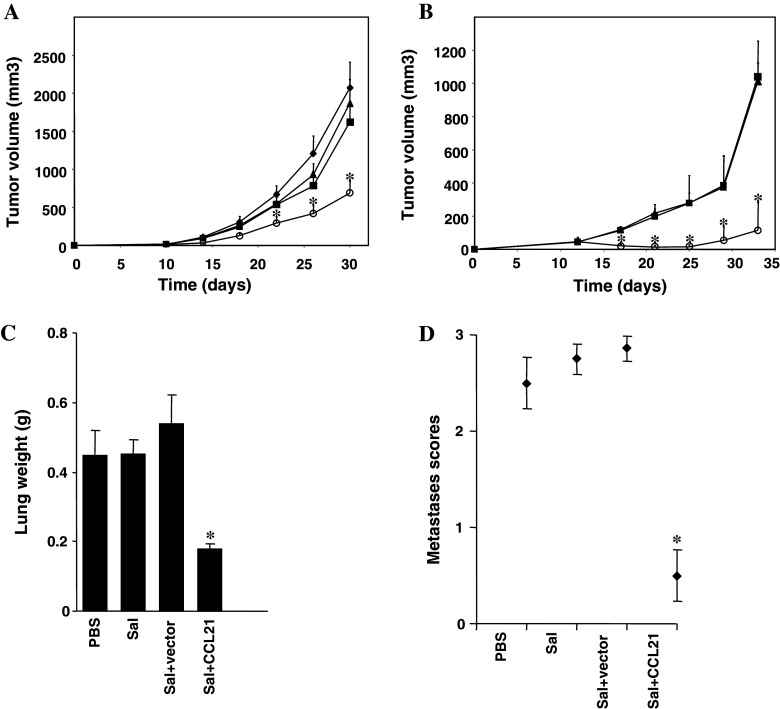Fig. 2.
Effect of CCL21-targeting S. typhimurium on tumor growth. Female mice were purchased at about 6–8 weeks of age from The Jackson Laboratory (Bar Harbor, ME, USA). All animal experiments were performed according to the National Institutes of Health Guide for Care and Use of Experimental Animals and approved by the Animal Care Committee of the Burnham Institute for Medical Research (#AUF 04-152). a BALB/c mice (n = 8) were challenged SC with 1.25 × 105 CT-26 colon carcinoma cells (from ATCC; Manassas, VA, USA) and treated IV with PBS (dark filled diamond), or 5 × 106 CFU of S. typhimurium (dark filled square), S. typhimurium with empty vector (dark filled triangle), or S. typhimurium with CCL21 vector (open circle) after 14 days. Bar graphs indicate average tumor volumes measured in two dimensions by external calipers and calculated as length/2 × width2 (mean ± SE). b Mice were challenged SC with 2.5 × 105 D2F2 breast carcinoma cells and treated IV with 5 × 106 CFU of S. typhimurium (dark filled square), S. typhimurium containing empty vector (dark filled triangle), or S. typhimurium bearing CCL21 vector (open circle) after 9, 14 and 19 days. Bar graphs indicate average tumor volumes of five mice (mean ± SD). c, d Mice (n = 8) were injected IV with 5 × 104 CT26 colon carcinoma cells and then treated IV with PBS, or 5 × 106 CFU of S. typhimurium (Sal), S. typhimurium containing empty vector (Sal + vector), or S. typhimurium bearing the CCL21 plasmid (Sal + CCL21) after 6, 13 and 20 days. After 29 days, lungs were weighed (c mean ± SD; normal lung weight ~0.15 g) and examined for metastases (d), assessing the percentage of lung surface covered by metastases as follows: 0 = 0%, 1 = <20%, 2 = 20–50%, 3 = >50%. Asterisks indicate P < 0.05. Results are representative of four independent experiments

